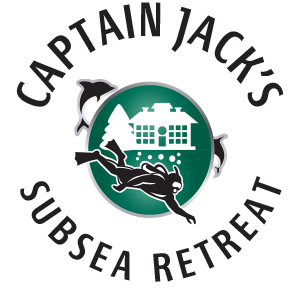Our Favorite Dives
The information presented here is based upon Jack Madro’s 45 + years of diving experience and numerous practical dives to each site. The stories and opinions are strictly his and are not to be used as a definitive guide to diving these sites.
Pre-Dive Check Out
If you have not been scuba diving in cold water in the past three months it is a requirement that you complete a pool checkout prior to getting on to our boats. We have a pool onsite.
We will test:
- Buoyancy and weights.
- Air management, regulator breathing efficiency and air sharing.
- Suit seals and leak test.
- Dive buddy skills and communication.
- Surface Marker Buoy deployment, whistle, light signals, submersible GPS and radio.
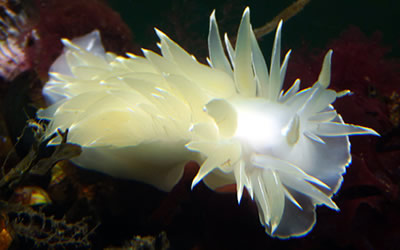
Level: Novice +
McCurdy Point, Saanich Inlet
Boat Dive. Depth 150 + feet.
Our most popular introduction to the Salish Sea. A fish and invertebrate nursery as well a deep wall for more experienced divers. Expect to see: red rock, spider and decorator crabs, rockfish and blennies of numerous varieties, nudibranchs and starfishes.
More
The resident wolf fish is not shy about taking your handouts of urchin roe or scallops. At depths greater than 60 feet you can expect to see Gumboot sponges and the glass or silica sponges. In the summer and fall months we have seen Dogfish sharks and Six Gill sharks.
Currents are usually light and the waves are small. Sites similar to this are: Sheppard Point, McKenzie Bight and Repulse Rock.
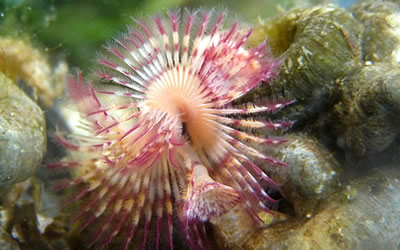
Level: Novice +
Tozier Rock, Saanich Inlet
Boat Dive. Depth 100 + feet.
A Pinnacle Dive that rises up from a depth of over 500 feet. Plumose anemones, tube worms, rockfish, blennies, crabs and nudibranchs of numerous varieties. The area is popular for octopus and wolf fish sightings.
More
Spur and groove formations make this a very interesting dive. The area is often frequented by seals and sea lions. Currents are usually light and the waves are small to moderate. Similar sites are: Wain Rock and Patey Rock.
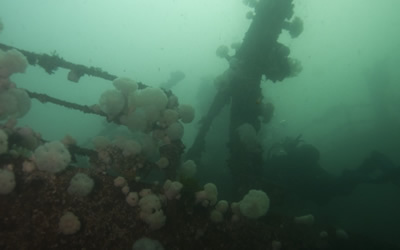
Level: Intermediate +
GB Church,Wreck Dive near Portland Island
Boat dive. Depth to 90 feet.
This 170 foot coastal Freighter that was built in England in 1943 to serve as a WW11 supply ship for the Allies. It was sunk on August 11, 1991 as an artificial reef. Today it is one of the prime examples of what an artificial reef can become.
More
The amount of marine life on this wreck is incredible. Plumose anemones and tube worms adorn the wreck and provide safe space for the ling cod, cabezon and rock fish. The shrimp and swimming scallops seem to be constantly moving and we often see juvenile Puget Sound King crab hiding in the hold and wheelhouse.
Our resident octopus can usually be found mid-ship, in a small whole directly below the keel, 70 – 80 feet depending on the tide. The quill back rock cod that patrols the propeller and steering keel at the stern is guessed to be over 50 years old!
The wheelhouse is starting to collapse as it and the ship have been underwater for nearly thirty years. The main hold is still in good shape for penetration purposes, reels and lines are not required.
If you are penetrating parts of this wreck, please observe proper fin kicking techniques to avoid stirring up silt for your fellow divers. This dive site is near the shipping lanes so the sound of BC ferries and other commercial traffic can be very loud underwater and their huge wakes can provide some difficulty when boarding your charter boat. Wind and waves can make this a very challenging dive. Only dive this site when conditions are favorable.
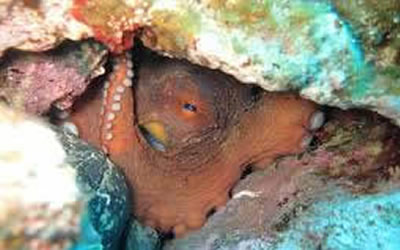
Level: Intermediate +
Arbutus Island, near Swartz Bay Ferry Terminal
Boat Dive. Depth to 90 feet.
This is an unexpected gem of a dive. A small island that is home to cormorants, sea gulls, Canada geese, oyster catchers and small seal colony. The strong flood current from the Satellite Channel bathe this site with nutrients to produce incredible amounts of life.
More
The huge population of red rock crabs and Dungeness crabs provide a haven for our giant pacific octopus. I have counted and seen more than 10 different octopi and dens at this site.
It is also the site where I witnessed a large ling cod and octopus battle one another. The 10 foot octopus pounced on the ling cod, trying to completely engulf and strangle the cod to its death. The ling cod managed to get free and latched on to one of the octopus tentacles. The ling cod corkscrewed its body to completely sever the lower two feet of the octopus tentacle with its spinning action. The whole scene lasted less than 30 seconds and of course the camera batteries were dead.
The small cave and swim through can prove to be exciting, but be sure to use your knife to move the purple urchins out of your way before you attempt the swim through. Boat and Ferry traffic can be unpredictable; use caution.
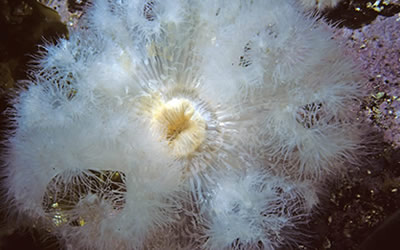
Level: Intermediate +
Dock Rocks, near Sidney and the Gulf Islands.
Boat Dive. Depths to 110 + feet.
Before our modern day marinas had haul out capabilities, mariners would look for places like this for a tidal drop to repair and clean their ship’s hull. On a “spring tide” the water level could drop as much as 15 feet, giving them three to four hours to effect their repairs.
More
As a dive site, the strong currents bathe the north wall with nutrients to produce tons of life. Expect to see: mitridium, anemones, tube worms, crabs, rock fish, greenlings, cabezon, ling cod, nudibranchs.
Salmon fisherman love this spot as well so beware of lost fishing lines and tackle. Carry a substantial knife or side cutters capable of dealing with spider wire. This is one of our favourites spots for harvesting swimming scallops and purple hinged rock scallops and yes a fishing licence is required.
Dive this site on slack and have a competent boat operator who is capable of reading the hydraulics and back eddies. It is extremely rare that you will be picked up where you were dropped off. We often use this as one of our “Sling Shot Snorkel Swims.”
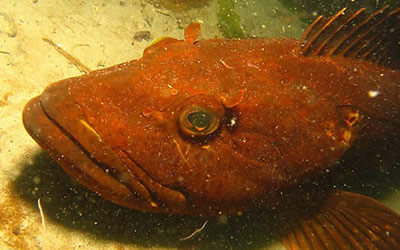
Level: Intermediate +
Domville Island Wall, near Sidney and the Gulf Islands
Boat Dive. Depths to 110 feet.
This is usually done as a drift dive. We drop you in at one of the protected coves either on the north or south of the island and once you and your buddy are ready, you will swim out into the current.
More
Stay between 20 – 50 feet of water for the best view of the anemones, tube worms, ling cod, crabs, abalone, urchins, cabezon. You will often have to hang on to the kelp or rock boulders to slow your pace and get a better view of the marine life. It is not uncommon for good divers to drift over one mile on this dive.
Over the years, we have harvested many King Crab and Rock Scallops at this site.
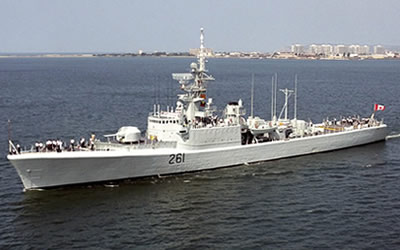
Level: Advanced +
HMCS MacKenzie, wreck dive near Gooch Island
Boat Dive. Depths to 130 feet.
By far the best wreck dive in the Gulf Islands. The MacKenzie was built by Canadian Vickers Ltd. of Montreal and commissioned to the Canadian Navy on October 6, 1962. This 366 foot, 2900 ton Destroyer/Escort ship was sunk on September 16, 1995.
More
This anti-submarine destroyer is covered with plumose anemones, barnacles, swimming scallops, ling cod, rock fish, tube worms and shrimp. The superstructure is intact and penetration dives are possible for experienced wreck divers.
Beware! The currents here are incredibly strong and it is rare for even the best divers to spend more than 45 minutes on this site. Plan to do at least two dives here if you have the opportunity. It is not uncommon for divers to miss their ascent lines for their safety stop so be prepared to do your safety stop in 15 – 20 feet without reference. Carry your SMB and Safety Signal light. On a Spring tide, your slack can be less than 10 minutes!
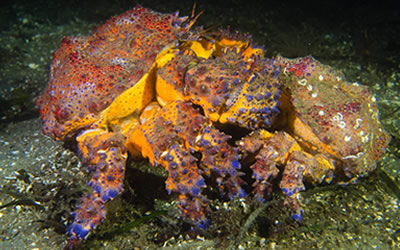
Level: Advanced +
Sheep Island, near Domville Island
Boat Dive. Depths to 130 feet.
This private island, with three residential structures was/is still owned by a wealthy California family who have been rumoured to have sold the island. In the past number of years that I have been diving this site, I have never met the owners.
More
I’ve only met a few of the different caretakers that have offered me the job of looking after the place.
It is a beautiful sanctuary if you want to get away from it all… The docks are well maintained and the buildings are in reasonable shape for year round occupancy. Island life is for the few and the hardy! Just imagine…you have everything you need to survive but no outside stimulus! Will you go nuts? In the “Shining” it took Jack Nicholson only a few months to go crazy at the “Overlook”. At Sheep Island, I would bet that it would be less than three weeks! At best, a summer holiday retreat.
Underwater the story is quite different. As with most of the Gulf Islands the strong currents and nutrient upwellings brings a tremendous amount of life to the surface. Anemones, scallops, crabs, greenlings, ling cod sculpins, gunnels, urchins and jellyfish are all present at this site.
The most important reason why we keep returning to this site is that it is the best location for harvesting King Crab. Everyone has heard of “Alaskan King Crab” and almost no one knows about Puget Sound King Crab. For those of us in the know, Puget Sound King Crab is better tasting and more filling than Alaskan Crab. You pretty much have to be a scuba dive to catch Puget Sound King Crab. You can catch Alaskan crabs in traps…
If you catch a 10 -15 lb. male, we will show you how to clean and cook it for the best crab feast of your life. Do you need another reason to dive here?
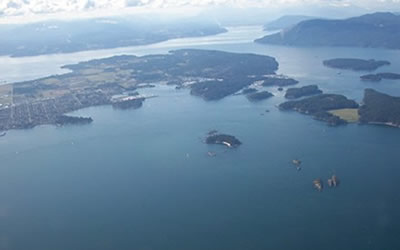
Level: Advanced +
Graham’s Wall, Northwest of Domville Island
Boat Dive. Depths 140 + feet.
I have never met “Graham” nor do I know of him other than the fact that for the past 40+ years this is the name that my mentors and their mentors before have called this dive site (probably named back in the 1960’s).
More
A unique spot in that we are in the middle of a shipping channel between Forest and Domville Islands. A small rocky outcrop that shows itself on a low tide. Many a mariner has lost their prop or run aground at this site.
There are actually two distinct walls at this site, one that runs from 40 – 140 feet and another that runs 60 yards past the first at 50 feet to 110 feet. The crimson and gold colored anemones are unique to this site. Many ling cod and scallops have been harvested from this site.
This is often done as a drift dive but if you end up in the shallows with the lettuce leaf kelp and the sand flats your dive is pretty much over.
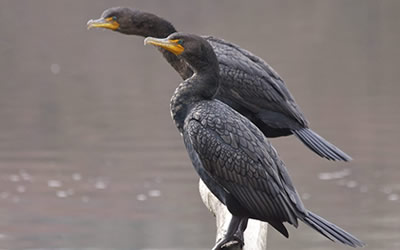
Level: Advanced +
Mandarte Island, between Sidney & Battleship Islands
Boat Dive. Depths to 70 feet.
Mandarte Island, really a large rock in the middle of Haro Strait, supports the largest sea bird colony in the Gulf Islands. The island is a First Nation Reserve and approximate 8000 sea birds nest here.
More
We are not allowed to land here but often the bird researchers will wave to us as we move past.
Although this is not a deep dive, it does feature boulders that are adorned with anemones, sea pens on the sand flats, flounder, place, and young halibut. Large groupings of moon snails and crabs are typically found in the eel grass.
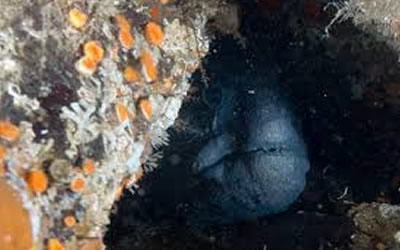
Level: Advanced +
Swordfish Island, Juan de Fuca Strait
Boat Dive. Depths to 90 feet.
Swordfish Island shares a lot of the same characteristics as Race Rocks, Church Island and the Bedford Islands. The water is 2-3 degrees colder than the Gulf Islands sites, the currents are stronger and the waves tend to be larger.
More
On the plus side, there is more life per square foot, the visibility is usually better and the marine mammals are usually present.
The big attraction here is the cave/swim through. You can usually find the entrance to the tunnel by looking for the fault or crack in the rock above the tunnel. Enter the tunnel slowly as often you will encounter young seal pups hiding inside. Although there is room for divers to swim abreast of one another, it is best to travel through it in single file formation.
Go slow and you will see anemones of many different species, tube worms, nudibranchs, blennies, scallops, rock fish in the 3-D plane that surrounds you. Not only is the bottom covered with life but the sides and ceiling as well.
Once you have made it through, move to your left and you usually find a male and female wolf fish couple in about 55 feet of water. In the past, these wolf fish would swim out of their den to greet you. As long as you crack open a sea urchin and feed them some of the urchin roe, they would play with you for 3 – 5 minutes. There are plenty of urchins on the bottom but please do not overdo it.
Then, swim to your right and through to the boulders and mini walls as they are covered with anemones of many varieties. Look for octopus, King crabs, ling cod and greenlings. If you make it to the chute between Swordfish and Church Island you will find a school of black bass/cod that number in the hundreds. Spear fisherman have claimed to have shot two or three fish here without even startling the school. Hard to imagine?
Be sure that you and your buddy have all the safety equipment with you: SMB, Signal light, whistle and if possible submersible GPS/Radio. Only experienced divers and boat operators should ever attempt these sites.
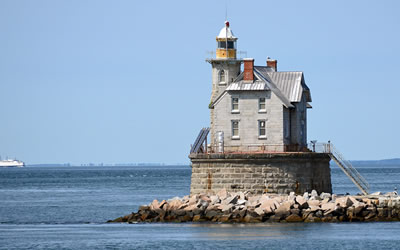
Level: Advanced +
Great Race Passage, Race Rocks Light
Boat Dive. Depths to 70 feet.
By far, the most popular of the dive sites at Race Rocks. We usually boat up to the light house boat ramp to slide ashore to wait for slack. We would spend some of our time visiting with the marine birds and mammals.
More
Race Rocks Light was one of the first lighthouses built on the west coast of Canada. The 80 foot light house structure was built from rock quarried in Scotland. The British Government financed the construction of the light and illuminated the lighthouse in 1860. It is the only black and white lighthouse tower in Canada.
Our dive plan is usually quite simple; get in the water about 15 minutes before the slack; enjoy the slack; drift back to your entry and exit point near the ramp to end your dive. The bottom is completely covered with marine life. Sponges, anemones, tube worms, urchins, basket stars, scallops, octopus, wolf fish, perch, cabezon, blennies, Irish lords and the list goes on and on. Add Seals, Pacific and Stellar Sea Lions, Elephant Seals and whales to the mix and you will have a diving cocktail that cannot be beat. Too good to be true?
It is true, but not without hazards. Race Rocks is situated in the Juan De Fuca Straight, near the open coast. It is subject to strong winds and heavy seas. The strong winds, the strong currents, fog and jagged rocks are said to be responsible for over 100 ship wrecks in the past 180 years. Most mariners avoid the area because it is known to be one of the most dangerous boating areas on the west coast.
As a diver, if you miss your slack, you are not diving. Have the wind pick up, you are not diving. Have the fog roll in, you at not diving. It is one of the most beautiful yet most frustrating dive sites you will ever experience. Your dive is not guaranteed, plans B, C and D may be in order.
References and Guides
Many of these books were first published in the 70’s and 80’s but are still relevant today.
“The Salish Sea” by Bruce Obee, from the Shaw Ocean Discovery Centre
ISBN 978-0-9865688-0-0
Pacific Coast Nudibranchs, David W. Behrens
ISBN 0-930118-05-7
Pacific Coast Inshore Fishes, Daniel W. Gotshall
ISBN 0-930030-31-1
Pacific Coast Nudibranchs, second edition, David W. Behrens
ISBN 0-930118-17-0
Whelks to Whales, Coastal Marine Life of the Pacific Northwest, Field Guide by Rick M. Harbo
ISBN 1-55017-183-6
Shells & Shellfish of the Pacific Northwest, Field Guide, by Rick M. Harbo
ISBN 1-55017-146-1
Pacific Coast Subtidal Marine Invertebrates, Fishwatchers’ Guide by Daniel W. Gotshall & Laurence L. Laurent.
ISBN 0-93011802-2
